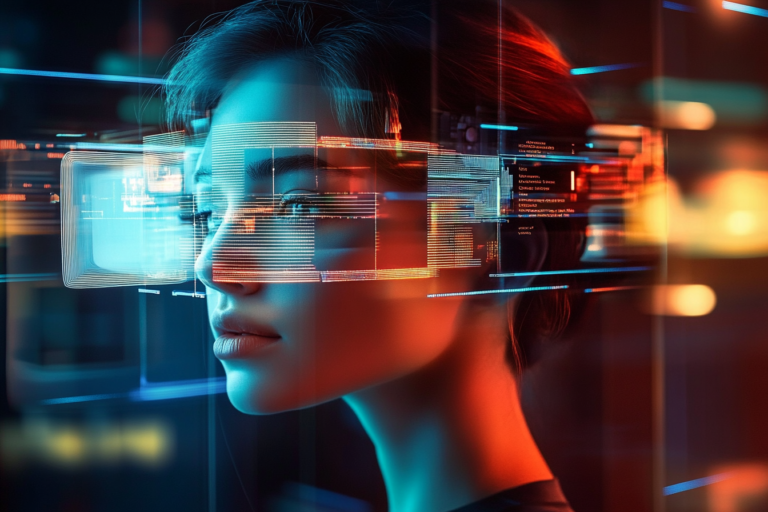The Rise of AI Image Creation: Transforming Art and Design
Introduction
The advent of artificial intelligence (AI) has revolutionized various fields, and image creation is no exception. AI-driven tools have become powerful assets for artists, designers, and businesses, enabling them to produce stunning visuals with minimal effort. This article explores the evolution, benefits, applications, and challenges of AI image creation, along with its potential impact on the creative industry.
The Evolution of AI in Image Creation
Early Innovations in AI Imaging
AI in image creation started with simple algorithms that could process and manipulate images. Over time, these technologies evolved into sophisticated neural networks capable of generating hyper-realistic visuals.
The Role of Generative Adversarial Networks (GANs)
Generative Adversarial Networks (GANs) have been a game-changer in AI image creation. These systems consist of two neural networks—a generator and a discriminator—that work together to produce realistic images. The generator creates images, while the discriminator evaluates their authenticity, leading to continuous improvement.
Advancements with Diffusion Models
Recent breakthroughs, such as diffusion models, have elevated AI’s ability to create highly detailed and artistic images. These models simulate the process of image refinement, starting with random noise and iteratively improving the output.
Benefits of AI Image Creation
Efficiency and Speed
AI tools drastically reduce the time needed to create visuals. This efficiency is particularly valuable for businesses and designers working under tight deadlines.
Accessibility for Non-Experts
AI-powered platforms democratize creativity by enabling individuals without artistic skills to produce professional-quality images.
Cost-Effectiveness
By automating labor-intensive processes, AI reduces the need for extensive human involvement, lowering costs for businesses and individuals alike.
Customization and Personalization
AI tools allow users to customize images according to their unique preferences, catering to diverse artistic needs.
Applications of AI in Image Creation
Graphic Design and Advertising
AI-generated images are widely used in graphic design and marketing campaigns to create eye-catching visuals.
Film and Animation
In the entertainment industry, AI assists in creating special effects, animations, and even virtual characters.
E-Commerce and Product Visualization
AI-generated visuals enhance product representation, providing customers with realistic previews of items.
Social Media Content Creation
Content creators leverage AI tools to produce engaging visuals that resonate with their audiences.
Virtual Reality (VR) and Augmented Reality (AR)
AI image creation plays a vital role in designing immersive environments for VR and AR applications.
Challenges and Ethical Considerations
Copyright and Intellectual Property
AI-generated content raises questions about ownership and copyright. Determining who owns the rights to AI-created images—the user, the AI developer, or the platform—is a complex issue.
Bias in AI Models
AI systems can inadvertently perpetuate biases present in their training data, leading to discriminatory outputs.
Authenticity and Misinformation
The ability of AI to create hyper-realistic images poses risks of misuse, such as creating deepfakes and misleading visuals.
Environmental Impact
The computational power required for training AI models consumes significant energy, raising concerns about environmental sustainability.
Future of AI Image Creation
Integration with Augmented Creativity
The future of AI image creation lies in augmenting human creativity rather than replacing it. Collaborative tools that blend AI capabilities with human input are likely to dominate.
Ethical AI Frameworks
Developing ethical guidelines and frameworks for AI image creation will ensure responsible use and minimize potential harms.
Enhanced Personalization
AI is expected to offer even greater levels of customization, enabling users to create images that align closely with their visions.
Expansion into New Domains
As AI technology evolves, its applications in image creation are likely to expand into areas such as education, healthcare, and beyond.
Conclusion
AI image creation is reshaping the boundaries of art and design, offering unprecedented opportunities and capabilities. While challenges exist, ongoing advancements and ethical considerations hold the promise of a future where AI serves as a powerful ally to human creativity. As we continue to explore this transformative technology, it is essential to strike a balance between innovation and responsibility, ensuring that AI benefits society as a whole.
FAQs
1. What is AI image creation?
AI image creation involves using artificial intelligence technologies to generate, manipulate, or enhance images.
2. How do GANs contribute to AI image creation?
GANs use a generator and a discriminator to create and evaluate images, resulting in highly realistic outputs through iterative refinement.
3. Are AI-generated images copyright-protected?
Copyright laws surrounding AI-generated images are still evolving, with ongoing debates about ownership and rights.
4. Can AI replace human artists?
AI is more likely to augment human creativity than replace it, providing tools that enhance artistic expression.
5. What are the risks of AI image creation?
Risks include misuse for creating deepfakes, perpetuating biases, and environmental concerns due to high energy consumption.


